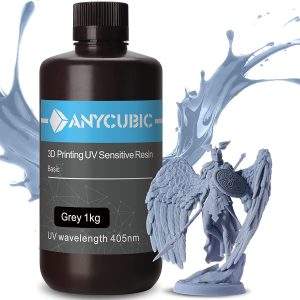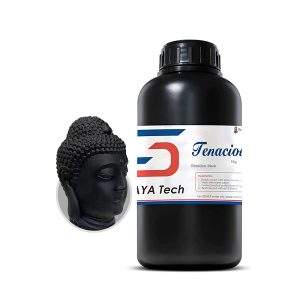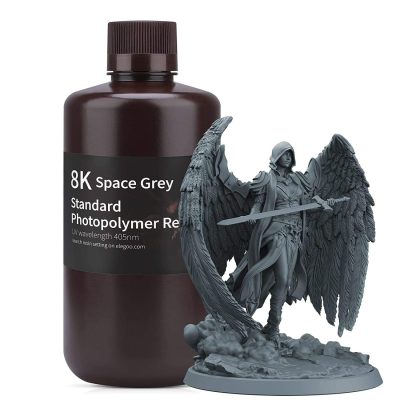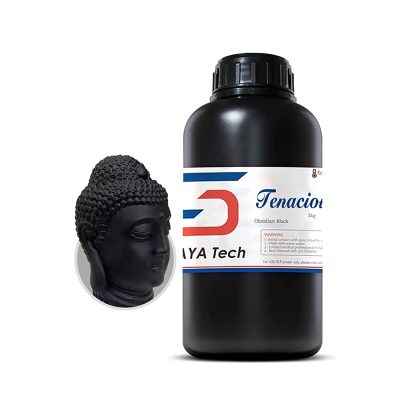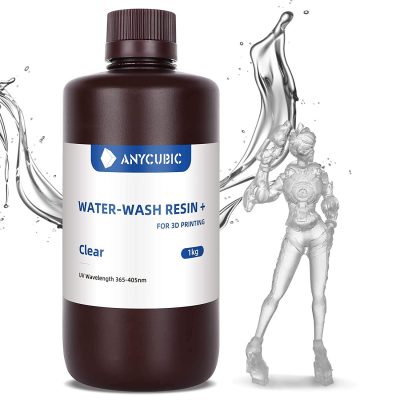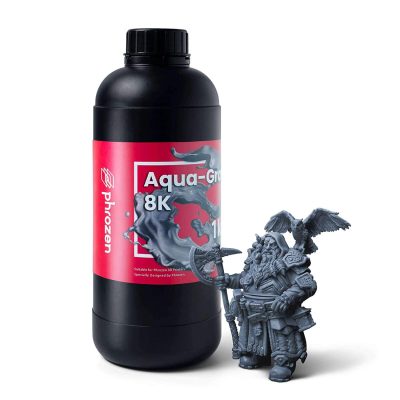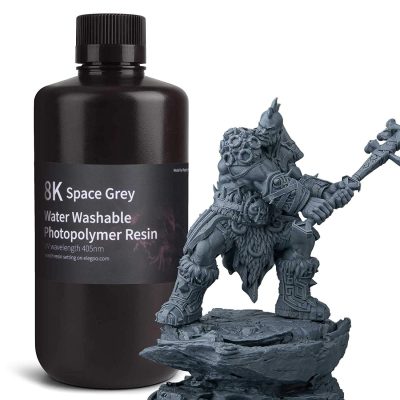- Last Updated: January 12, 2024
-
 Jackson O'Connell
Jackson O'Connell
 If you’ve ever been on Thingiverse, Printables, or another 3D model repository, you’ve probably seen some small 3D models, usually figurines, with a ton of intricate detail. These models are what we call miniatures, and they’re super popular for 3D printing.
If you’ve ever been on Thingiverse, Printables, or another 3D model repository, you’ve probably seen some small 3D models, usually figurines, with a ton of intricate detail. These models are what we call miniatures, and they’re super popular for 3D printing.
Miniatures are great ways to show off the detail capabilities and precision of your 3D printer, and they’re also useful for playing tabletop games like Dungeons & Dragons or War Hammer.
Miniatures are usually printed on resin 3D printers (LCD/DLP), like the Elegoo Mars 3, due to their ability to print small details nicely and hide layer lines on models.
And, if you want the best print quality for miniatures, you’ll need high-quality resin that’s optimized for printing detail. My favorite resin for 3D printing miniatures is Phrozen Aqua 8K, as it yields models with up to 8K pixel resolution. But, if you’re using a 4K printer, then you’ll love Anycubic’s Standard resin as it’s low-cost and high-detail.
Want to hear about more of the best resins for 3D printing miniatures? Just keep reading!
Best Resins for Miniatures At A Glance
1. Elegoo Standard 8K (Best Choice)
2. Anycubic Standard (Best Value)
3. Siraya Tech Tenacious (Premium Choice)
4. Anycubic Water Washable 8K (Easiest to Use)
5. Phrozen Aqua 8K (Best Print Quality)
6. Elegoo Water Washable 8K
7. Elegoo ABS-Like
Elegoo is one of the biggest names in the consumer resin 3D printing industry, and their Standard 8K Resin is hands down the best for miniatures.
The resin, as indicated by the name, is meant for being printed on an 8K pixel resolution printer, such as the Phrozen Sonic Mini 8K or Elegoo Saturn 2. But don’t worry if you’ve got a printer with only 4K resolution or lower because this resin will still work. It just won’t be living up to its full potential, detail-wise.
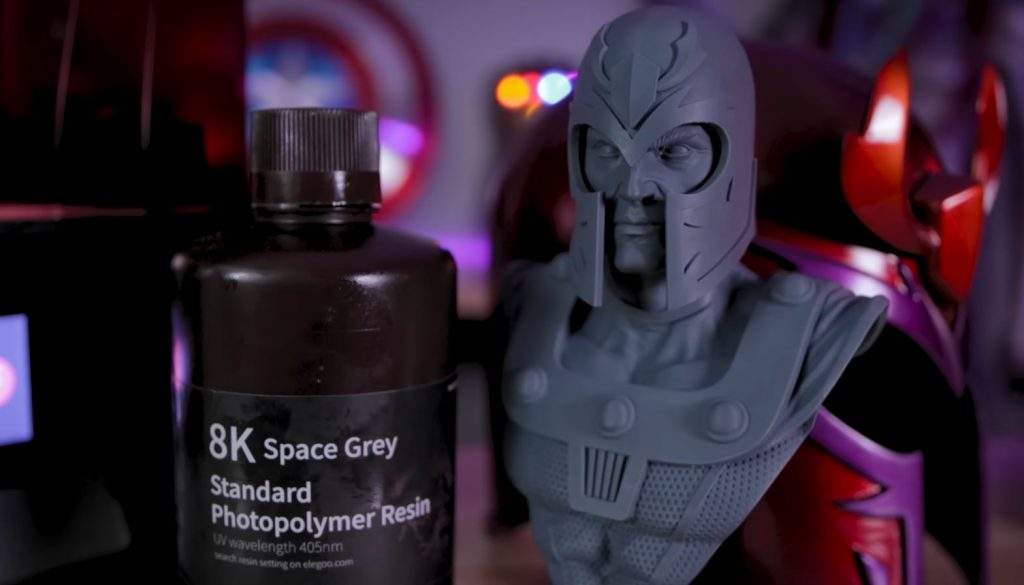
And, on this note, the detail yielded by Elegoo Standard 8K resin is absolutely insane. I was able to print tons of miniatures with boatloads of small details, and each came out basically perfectly.
As it’s Elegoo’s “Standard” version of their 8K resin, you’ll need some isopropyl alcohol, acetone, or another compatible solvent to wash your miniatures prints once completed.
If you’ve ever bought a 3D printer, then you probably have heard of Anycubic, one of the leading brands in FDM and resin 3D printing. Anycubic makes all sorts of 3D printing products, and their standard 3D printing resin is easily the best value resin for printing miniatures.
For under $30, you get a whole kilogram of high-quality resin that yields amazing, well-detailed miniature 3D models. And this Anycubic resin also is available in a couple of colors, including green, grey, aqua blue, black, and more. I personally love this because I hate having to paint models, so the color options let me avoid this.
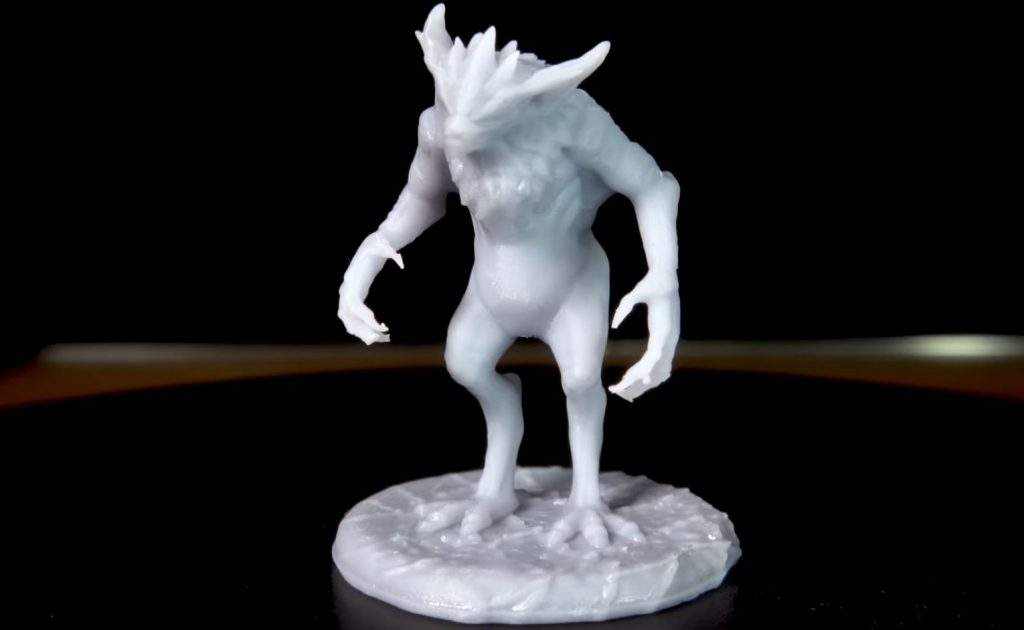
Unlike the Elegoo Standard 8K resin, this Anycubic resin isn’t optimized for 8K pixel resolution printing, so the detail likely won’t be as nice. But, based on my own experiences as well as countless positive reviews, this resin still yields exceptional print quality for small models.
And, because this resin is so popular, there are tons of slicer setting recommendations out there that you can try out to perfect the quality of your models.
Unless you’re deep in the resin 3D printing industry, you probably haven’t heard of Siraya Tech, but their Tenacious resin, despite its odd name, is perfect for printing miniatures.
If I’m being completely honest, Siraya Tech Tenacious resin costs a pretty penny, especially when compared to other options on the market. But I promise you every cent is worth it if you’re trying to maximize the quality of miniature 3D prints. No, seriously, though; I only buy myself Tenacious resin on special occasions, but I’m always fascinated by the overall quality of models printed in the resin.
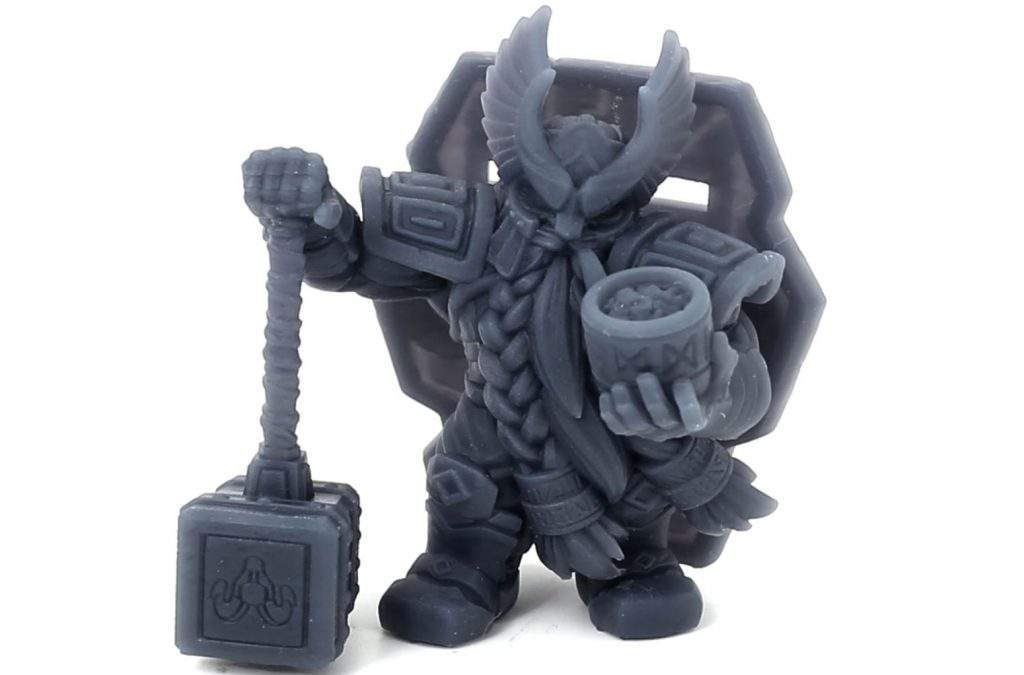
On top of being extremely detailed, which is basically a given for resins on this list, Siraya Tech Tenacious resin also provides a decent amount of strength and durability for prints. While this doesn’t seem super important for miniature prints, strength is always something nice to have, especially if you’re like me and tend to drop everything.
So if you’ve got a little extra dough in your 3D printing budget this month, definitely give Siraya Tech Tenacious resin a try. You won’t regret it!
Another option from Anycubic is their Water-Wash Resin+. This resin is meant for being printed on an 8K pixel resolution machine, like the Phrozen Sonic Mini 8K, but it also works on printers of lower resolutions, like the Anycubic Photon Mono.
The 8K element of the resin obviously means it’s exceptional when it comes to the detail on prints. But that’s not the only thing going for this resin; it’s also water washable. This means you can use plain tap water to wash prints once they’re done instead of having to use a difficult chemical like acetone or alcohol.
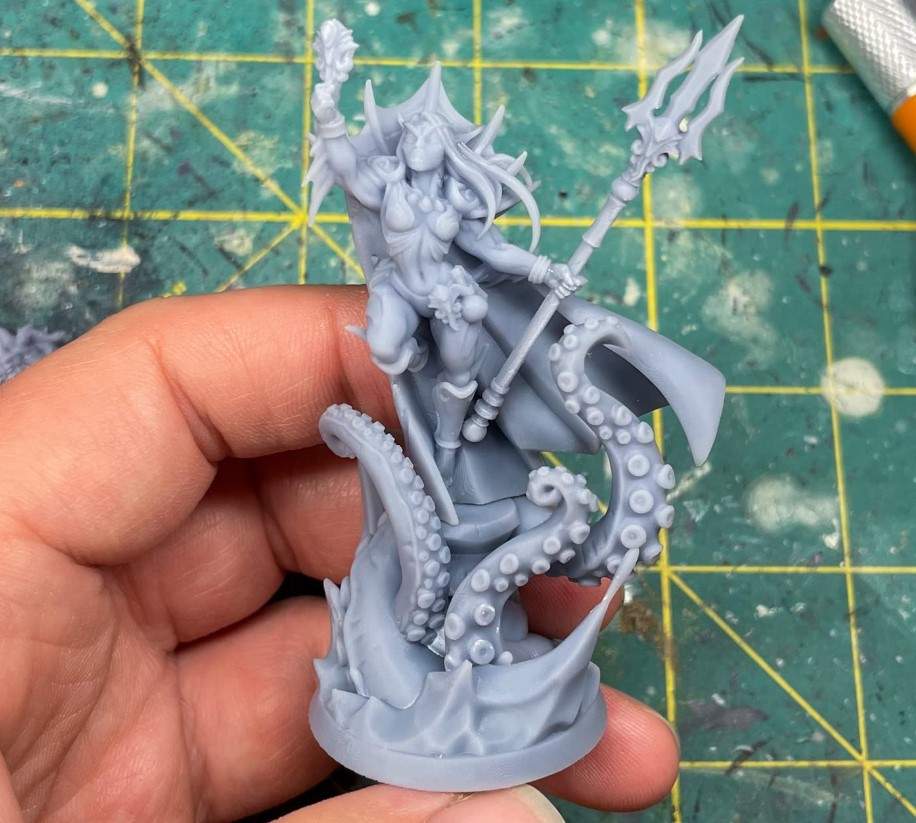
While this doesn’t seem super useful, it makes the post-printing process so much quicker because you don’t have to worry about conserving how much solvent you use because water is free (basically).
So, if you want a solid resin for printing miniatures that are amazing with detail and make your life 100 times easier, try out Anycubic Water-Wash Resin+!
Next, Phrozen, one of the leading manufacturers of 8K resin printers, has made a resin designed specifically for being printed in 8K resolution.
Phrozen Aqua 8K is easily the best resin on this list when it comes to print quality. This likely comes from the fact that the manufacturer, Phrozen, knows exactly what 8K printers need because they make them.
The detail of resin prints made in Phrozen Aqua 8K resin is actually insane, though! Just check out these prints!
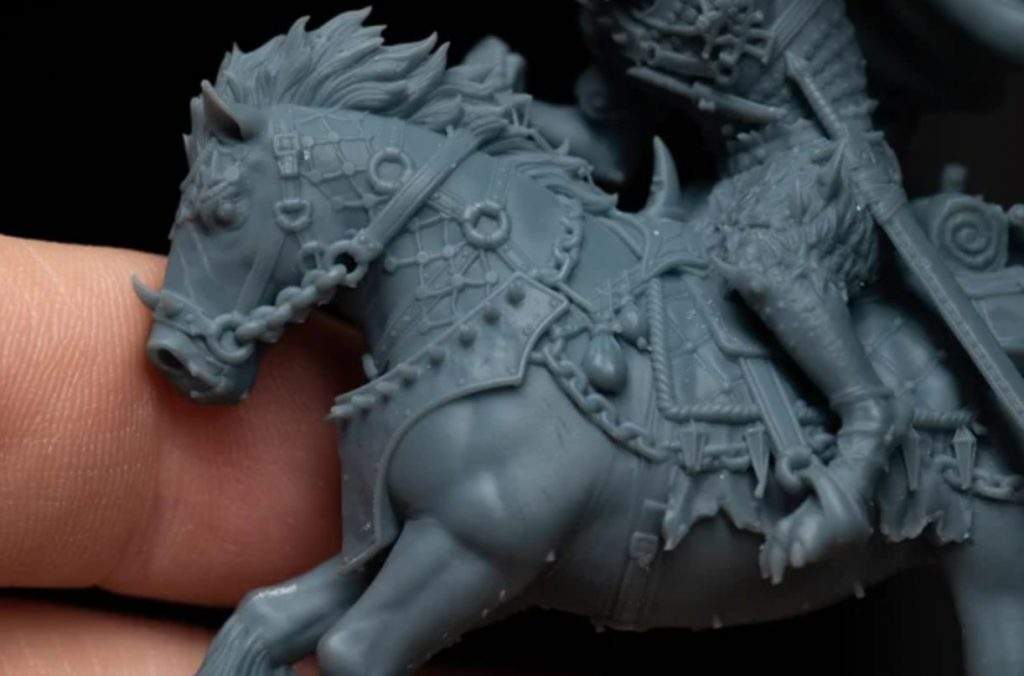
Sadly, though, in an effort to make the resin as detail-maximizing as possible, the resin isn’t water-washable. As such, you’ll have to get your hands dirty with a solvent like acetone or isopropyl alcohol to properly wash prints.
But, overall, this resin is one of the highest-quality resins I’ve ever seen, and I strongly recommend it for anyone looking to maximize the detail of their miniatures!
Elegoo strikes again on this list with their Water Washable 8K resin. This resin is very similar to their standard 8K resin, which I already went over. But, as the name of the product suggests, you can wash parts made of this resin with water instead of having to deal with a toxic solvent chemical like acetone or IPA.
This resin is optimized for printing in 8K pixel resolution, so detail is guaranteed for prints!
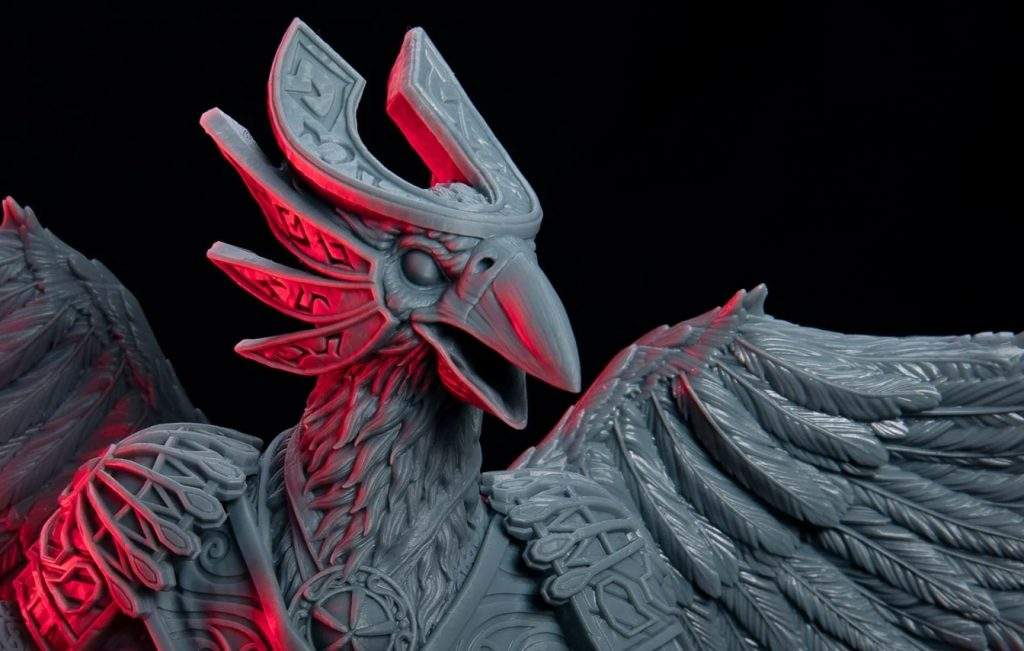
But you will have to watch out when printing miniatures because water-washable resins, like this one, are known to have negative effects on the strength of parts, especially when they’re small. Don’t worry, though, because you can prevent this from happening by increasing the layer exposure time in your slicer to ensure all resin prints come out decently strong.
Sadly, Elegoo Water Washable 8K resin only comes in one color, but Elegoo will probably come out with more as 8K resin printing gets more popular. And, like with the other 8K resins, don’t worry if you’re using a 4K resolution printer because these resins will still work well!
Lastly, we’ve got another option from Elegoo: their ABS-like resin. As you probably could tell by the name, this resin was developed to allow you to capture the benefits of ABS filament but for LCD 3D printing instead of FDM.
The main reason you should use Elegoo ABS-Like resin is when you want to print detailed models, such as miniatures, with a decent amount of strength and durability.
First off, Elegoo ABS-like resin is a lot stronger than your average 3D printing resin, with parts printed in the resin having a proven tensile strength of up to 52 MPa. This is a lot higher than most detail-focused 3D printing resins, which usually have a tensile strength under 30 MPa.
Additionally, because this resin was made to have similar properties to ABS, it’s also very temperature resistant. Elegoo says parts made in this filament work in temperatures up to 100 °C. Personally, I’ve only used parts out of this resin in hot outdoor temperatures (~35 °C), but it’s always good to have a high-temperature resistance!
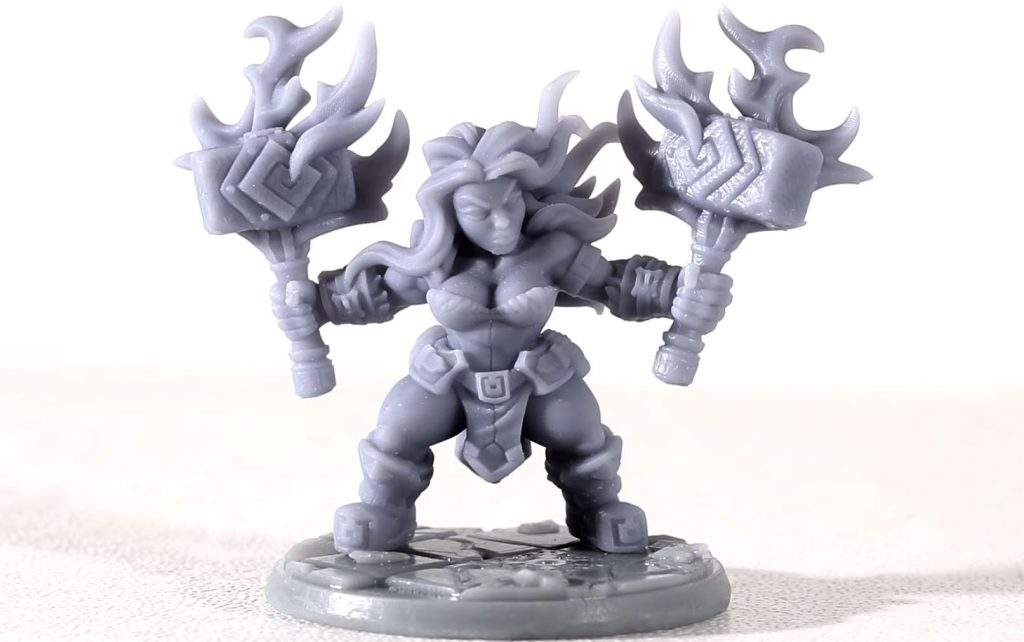
Also, Elegoo ABS-like resin is surprisingly very inexpensive, but I guess this makes sense because ABS is one of the least expensive plastics on the planet. And the resin is also available in a handful of colors, including white, baby blue, yellow, red, clear green, mint green, black, and more.
But if the color you want to print a model in isn’t included on the list of available colors, don’t worry because Elegoo ABS-Like resin is very easy to paint, according to reviews.
The resin should also work well for miniatures because Elegoo has reported that this material has very low shrinking, meaning your prints will be very accurate. This resin is also known to respond well to curing, which stems from the ABS-like properties of the material.
What is Resin?
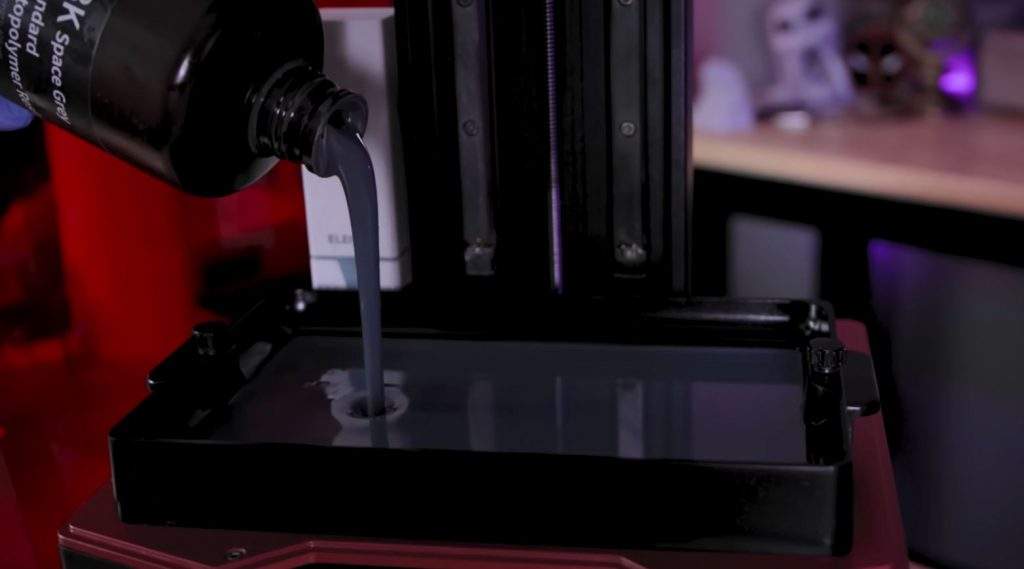
Resin is the printing material for resin printers, also known as LCD or DLP 3D printers. Just like FDM 3D printers require filament, LCD/DLP printers require resin to make 3D prints
Resin is a liquid plastic-y material that’s the juice of a resin 3D printer. Resin is poured into a VAT, which is a tub on resin printers used to store the liquid before it’s solidified by the laser.
Resin comes in many different variations and can vary depending on the specific plastic material, resolution, durability, paintability, washing and UV light curing process, and more!
Printing Resin Miniatures
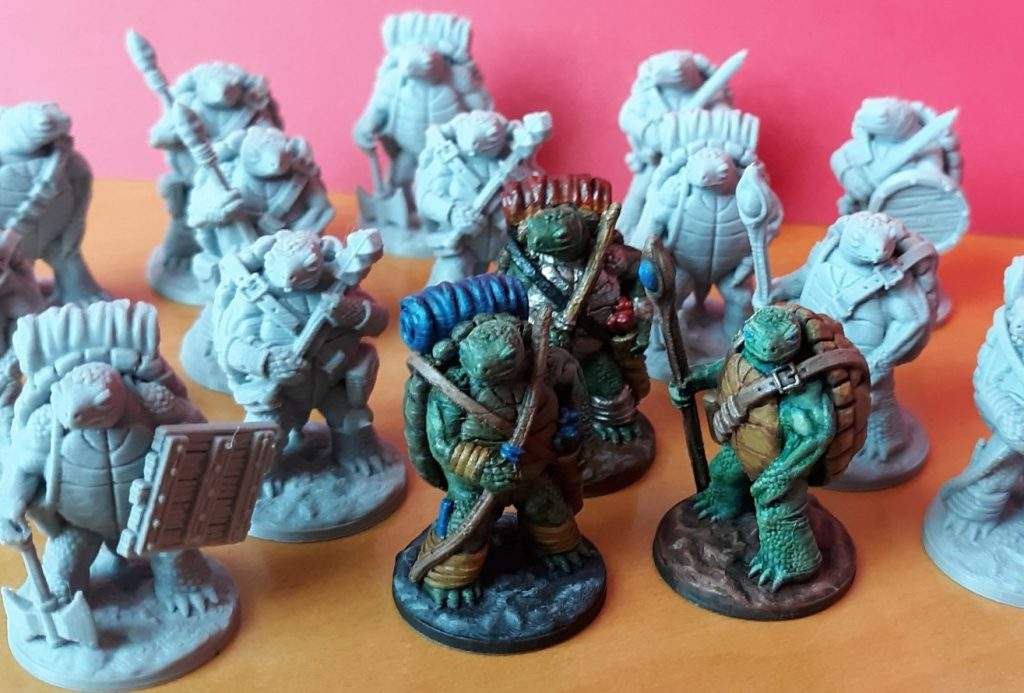
If you want to print miniatures, whether it be War Hammer characters or D&D figurines, you’ll want to make sure you’re maximizing the amount of detail in your prints.
The best way to do this is by using a resin 3D printer with a high-resolution LCD. That’s because the resolution, measured in pixels, of the LCD on a resin printer, controls the precision of the laser. As such, the higher the resolution of the LCD, the higher the quality of your prints and the more detail they can have.
Most resin 3D printers today have 4K resolutions, but some, like the Phrozen Sonic Mini 8K, have 8K resolutions, which can make even more detailed 3D prints. You can check out our article about the best resin 3D printers and best 3D printers for miniatures specifically to find a machine that can output your desired level of detail for miniatures.
On top of having a high-resolution 3D printer, you’ll also want a high-resolution resin. Moreover, resins are optimized for being printed at different resolutions, so an 8K resin will print best on an 8K 3D printer, yielding more detail than a 4K resin on an 8K printer or a 4K resin on a 4K printer.
Lastly, you should fine-tune the slicer settings for your resin 3D printer. While slicer settings are less adjustable than with FDM 3D printers (e.g. Ender 3), they’re still a great tool you can use to improve the quality of your prints and maximize the detail in your miniature 3D prints.
What Type of Resin is Best for Printing Miniatures?
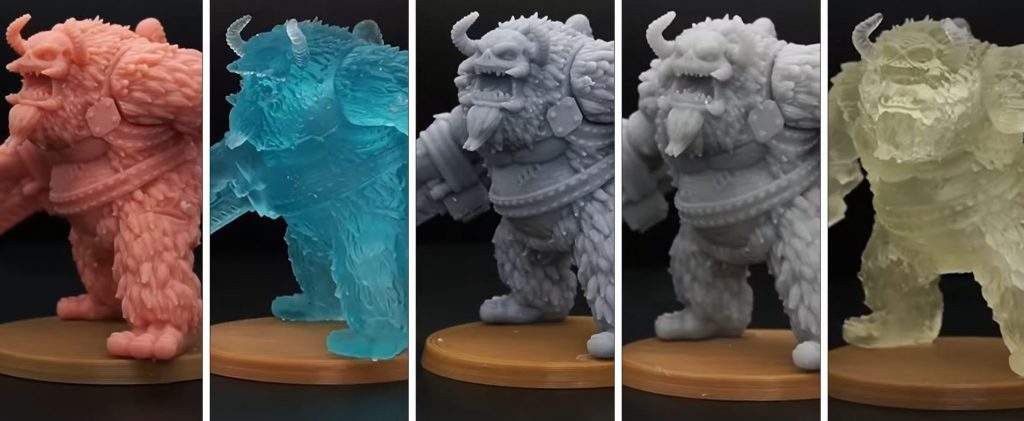
The best type of resin for 3D printing miniature 3D models is high-resolution resin. That’s because these resins are optimized for high-resolution printing, meaning they can handle a higher level of detail on prints than normal resins.
You can find a high-resolution resin by looking at the pixel resolution listed by the manufacturer (higher is better). Additionally, terminology like “maximum detail” or “miniature” typically indicates a resin is better for printing miniatures because it can handle more detail.
How Long is the Curing for Resin Miniatures?
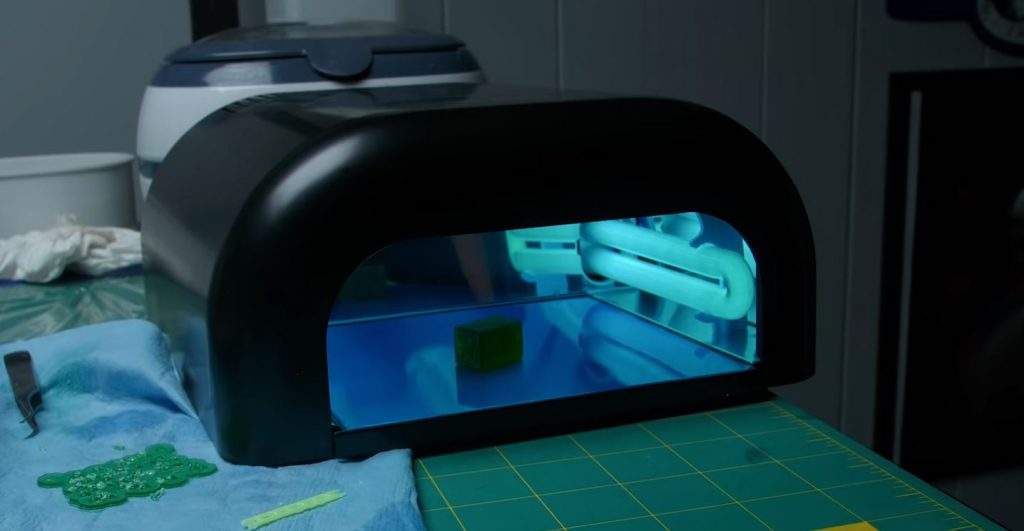
Curing is an important step for any resin 3D print because it solidifies any remaining resin on a model, which can perfect the detail on a print. And the curing process differs in how long you leave the 3D print in the curing chamber (UV light).
Because miniatures are small in volume, they require less curing time than a normal-size 3D print. I like to cure my resin miniatures for 2 minutes. But if I see any uncured plastic still on the model, I’ll stick the model back under the UV lamp for another minute so that it’s fully cured.
Check out our article on the best wash and cure stations here.
Considerations for Miniature Resin
Resins are inherently complicated products with many different properties and features. Below, I’ve gone over some important elements to consider when looking at a resin for printing miniatures:
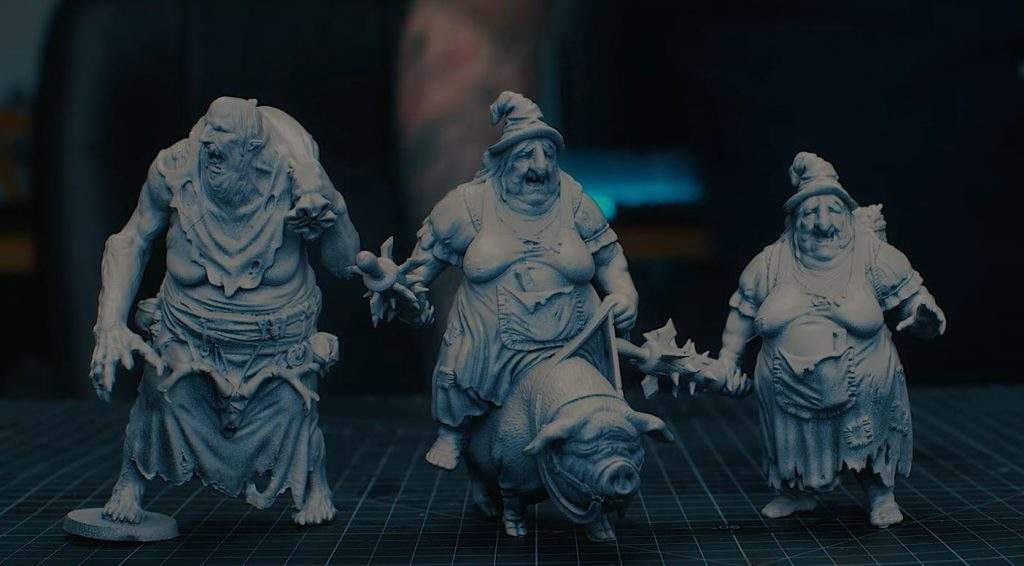
Resolution
The most important factor for a resin meant for printing miniatures is the resolution of the resin.
Most resins have a listed resolution, such as 4K or 8K. The higher the resolution of your resin, the better your prints will come out.
But it’s important to note that you should try to get a resin with a resolution that matches the maximum resolution of your resin 3D printer. That’s because a “4K resin” means that the liquid resin is optimized and can handle 4K printing.
For example, I use an Elegoo Mars 3, which has a 4K resolution LCD screen. As such, I make sure to get a resin with a 4K resolution so that my miniature prints turn out best!
Durability
While strength for miniature prints doesn’t typically matter, it’s always a good thing to have.
As such, you should look at the durability of a resin. Most resin manufacturers don’t state the tensile strength of their resins, but you can check the reviews to see how strong users’ prints turn out.
Paintability
Next, you should consider the paintability of a resin because not all resins are as easy to paint as others.
This mainly applies if you plan on painting your resin 3D prints because, if you don’t, then the paintability of a resin doesn’t matter.
I like to look at the reviews for a resin to determine how easy it is to paint, and I suggest you do the same!
Curing
If you’ve used a resin printer before, then you know that washing and curing are everything for achieving high-quality 3D prints.
Different resins require different processes for washing and curing. Some can be washed in tap water, while others require acetone or isopropyl alcohol. What liquids work for washing a specific resin print is almost always listed on the selling site for the resin by the manufacturer, so check that!
As for curing, some resins are easier to cure than others, and some also cure better than others. You can check the suggested curing time on the resin manufacturer’s website. I also like to look at the reviews to see the quality of cured prints from different users.
Speed
Looking at how fast you can print a certain resin is also super important. That’s because not all resins perform well at fast print speeds.
Usually, the manufacturer of a resin will list the recommended print speed for a specific resin, so you can always check that for comparisons. But if a manufacturer doesn’t provide this information, you can also check the reviews for the resin!
Value
Lastly, you should consider the value of any resin you buy. Resins, especially those catered towards printing miniatures, can get somewhat pricey, so in the interest of your wallet, you should make sure you’re getting a good bang for your buck.
If you’re looking for a resin for miniatures that has the most value, the Standard resin from Anycubic is perfect!
Conclusion
While many factors go into the print quality of resin 3D printed miniatures, one of the most important ones is the resin material.
If you’re printing miniatures, you’ll want a resin that’s optimized for high-resolution printing, as this will maximize the detail in your 3D model.
My favorite resin for printing miniatures is the Phrozen Aqua 8K, as you can use it on an 8K resin 3D printer, like the Phrozen Sonic Mini 8K. It also works on 4K and lower-resolution printers, providing tons of detail for prints!
Now, if you’d rather have an easier post-printing experience, then I’d suggest using Anycubic’s Water-Wash Resin+. With this resin, you can use water, rather than acetone or IPA, to wash models before curing them.
And, lastly, if you’re on a budget, then check out Anycubic’s Standard resin, as it performs well with detailed 3D models and won’t break the bank!
Enjoy!
Related Articles:




